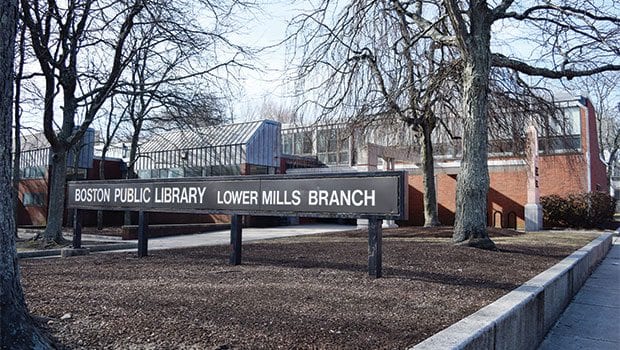City seeking info on developing public assets with housing
Housing iLab takes cue from other cities to increase housing affordability

The city’s Housing Innovation Lab recently released a Request for Information to measure interest and consider ideas for redeveloping city assets such as libraries and fire stations into mixed-use housing with public service facilities.
Mayor Martin Walsh, who established the Housing iLab in 2017, said, “With the right projects and partnerships in place, we believe this model could have the potential to enhance city property by improving our infrastructure and generating new affordable housing options needed in neighborhoods throughout our city.”
Drawing inspiration from other cities that have built affordable and market-rate housing alongside and on top of city assets such as transit stations, Boston is at the moment, only “looking generally at how this would function, what kinds of assets would work best, what locations,” said Marcy Ostberg, director of the iLab. “Then the next stage, if yes, there is excitement around this, we’d choose an asset that makes sense based on what we learned and then we would go to the community and have a full community process.”
The Housing iLab team has studied exemplary models in places like Washington, D.C., where a public library and fire station was redeveloped to include 154 units of affordable housing, and the upcoming renovation of Sunset Park Library in Brooklyn, New York that’s topped by 49 units of permanent affordable housing.
And although funding would be dependent on specific sites chosen, every logistical scenario will be considered, including using “traditional forms of affordable housing funding” like in Chicago, or private funding like in New York, said Ostberg. “There are different ways to do it but we’re aiming for the best public benefit possible,” she said.
Ideally, Ostberg said, the concept would meet some of the Mayor’s goals of “revitalizing and restoring public assets” as well as his plan to add 53,000 housing units by 2030. “Our maintenance and development needs [for city buildings] are outpacing our funding. So there’s that challenge and there’s also the challenge of trying to provide affordable housing for everyone in the city.”
The department is seeking feedback from a “diverse set of proposals that can help us think more broadly about how this could actually function,” said Ostberg.
She continued, “We want the everyday citizen who is walking by their library and has ideas of what could happen with that space. We also want architects and developers who are in the industry to have ideas of what the design and actual development might look like.”
Stakeholders such as neighborhood association leaders and residents plan to remain engaged in whatever comes out of the RFI process and will consider how it could impact their communities and quality of life.
Louis Elisa, president of the Garrison Trotter Neighborhood Association, said that although it is a unique concept, “The question is, who would it benefit and how? And how does it change the nature of the community?”
He said co-developing housing in something like a library building would “be a benefit for a family to have access,” but he suggested that the city should consider opening up control of the parcels to community members as pathways to equity. “Can we invest in housing that allows us to have resources in the future?” he asked. “If you’re always renting, all the money you spend on housing evaporates because it goes to a landlord and there are no investor benefits.”
Carolyn Royce, who serves on the housing committees of the Egleston Square Neighborhood Association and the Jamaica Plain Neighborhood Council, said she likes that the Housing iLab exists and tries to find new ways to solve Boston’s issues in an inviting way.
“They’re not high pressure, it’s more like ‘How about this? Would this work?’” said Royce. “It’s a positive and creative way to see if there is an alternative.”
She said she believes “people should just explore the idea.”
The Housing iLab was formed, in collaboration with the Department of Neighborhood Development and the Mayor’s Office of New Urban Mechanics, to test innovative and creative ideas to increase housing affordability in Boston such as compact living, incentives for developers to build more affordable units and intergenerational homeshare living.
A preliminary list of city assets is available in the Request for Information for potential respondents to review online.
There is a March 23, 2018 deadline for proposals and an applicant conference, for those who want to ask questions in person, will take place on Thursday, Feb. 15 at 11:30 a.m. at 26 Court Street, Boston.






